After being requested to dive into photovoltaic plastic greenhouses, Nicolas Julien, R&D Engineer at Filclair, rapidly concluded placing solar panels on top of a plastic greenhouse would not work as the systems would be too heavy for the structure. However, there are opportunities to turn solar light into electricity within a plastic greenhouse, recent research shows: by placing solar panels inside the greenhouse, underneath the gutter. Vertically, that is. A simulation shows it could reduce the net heating expenses of a greenhouse to about 50,000 euros per year per hectare.
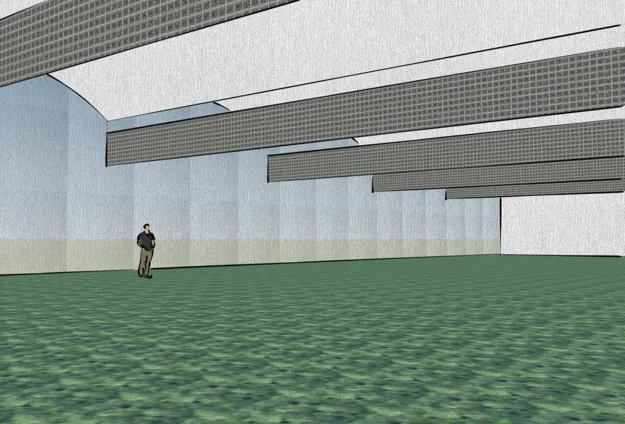
"Photovoltaic solar panels are increasingly being integrated into the agricultural sector, and we were consulted to respond to requests for photovoltaic greenhouses," says Nicolas. "But the structure of plastic greenhouses is not strong enough to support solar panels on the roof. Therefore, it was necessary for Filclair to try to find other solutions to meet this PV greenhouse market."
With the diffusion coefficients from the plastic film manufacturers in mind, and simulations from the European official system PVJJS, which provides geographical information on photovoltaics, he researched various ways to position the panels inside the greenhouse. When it comes to solar panels, positioning is vital. « A fixed panel tilted at an optimal angle of 39° towards the South receives +18% more light throughout the year than a horizontal panel, and a vertical bifacial panel receives +15% on both sides. When using East-West solar tracking, the light gain is +40% », Nicolas says, but the idea of a tracking system in the greenhouse was abandoned as the diffusion of light significantly reduces the interest in tracking.
Therefore, the team focused on a configuration that would take maximum advantage of the benefits of diffuse light, which are to eliminate the risks of shading and to be able to place the panels with the desired orientation without casting a direct shadow on the crops: placing them vertically, under the gutter. By using bifacial panels and making use of the reflection potential of greenhouses and its interior, he sees potential as the higher amount of diffuse light inside the greenhouse compensates for the 20% loss of brightness due to the greenhouse cover and structure. "But the higher the panel, the less beneficial the diffuse light becomes because of the loss of light."
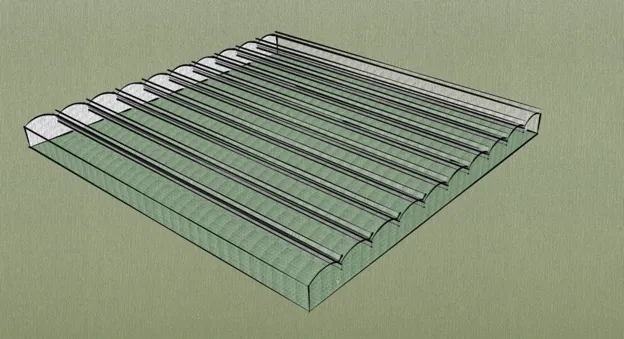
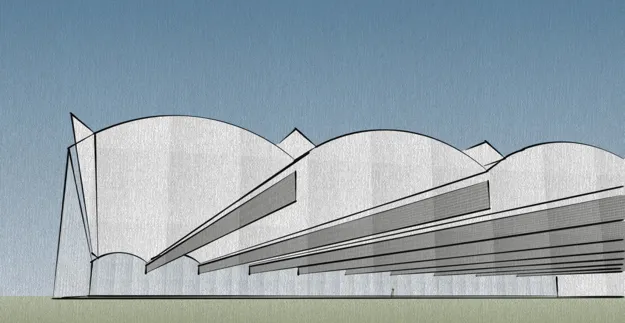
So how about the numbers? "For a total surface area of 1170m² of bifacial panels (2340m² of photocells) for a greenhouse of 9600m² (10 spans of 9.60m x 100m), one can expect the bifacial panels to capture up to 128% of the amount of light captured by an equivalent horizontal surface outside", Nicolas concludes from simulations, assuming the average albedo of the greenhouse floor (including the crops) was 50%, and the ETFE plastic films have both excellent light transmission and good light diffusion. "When stacking 2 panels to double the height of each row, there is still more light compared to the outside solar irradiation. By tripling the height, it is less advantageous, but we still retain 89% of the outside Global Horizontal solar irradiation", he concludes.
According to Nicholas, the fact that there is a maximum of diffuse light in the greenhouse is not only beneficial for the panels but also for the vegetation, allowing for very homogeneous lighting and no shadow from the panels. "Moreover, the panels are located in a position that does not interfere with activities inside the greenhouse. It can be assumed that the decrease in yield caused by the overall decrease in luminosity in the greenhouse can be partially compensated by this more homogeneous light on the leaves, making it more profitable than a traditional photovoltaic greenhouse with panels placed on the roof," he says.
He does say there is additional information to take into account, such as the higher cost of bifacial solar panels and the effect of the high temperature in the greenhouse on the efficiency of the panels. "Conducting real-world experiments is essential to validate these hypotheses and gather more data on the performance and efficiency of bifacial solar panels under ETFE greenhouses. It would also allow us to study the effect of different factors such as temperature, humidity, and weather conditions on the panels' performance."
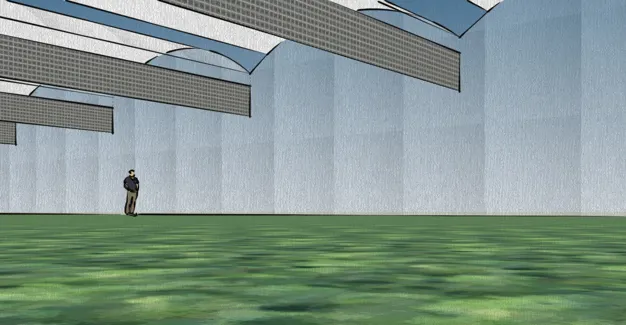
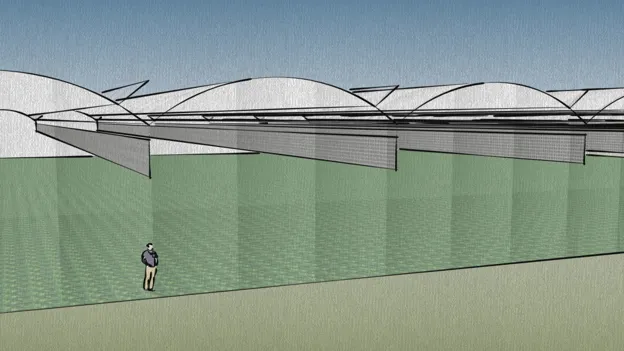
To put these results in perspective and focus on a specific case, Nicolas referred to the study by Agrithermic using the Hortinergy software, which demonstrated that a Filclair double-inflated ETFE greenhouse could benefit from +18% more light than a Venlo glass greenhouse. If nine rows of vertical bifacial panels were installed under this ETFE greenhouse at the height of 1.3 meters, the decrease in luminosity due to the panels would exactly compensate for this surplus of +18% of light under the ETFE greenhouse, thus maintaining agricultural yield with additional energy production. "For a one-hectare greenhouse of tomatoes, with double ETFE inflatable cover and a thermal screen, assuming an energy cost of 40 euros/MWh for gas, heating expenses would be around 80,000 euros per year by heating the greenhouse at 20°C during the day and 16°C at night throughout the year except in November. The photovoltaic system would reduce the net heating expenses of such a greenhouse to about 50,000 euros per year per hectare."
Of course, to arrive at a reliable projection of electrical production for this specific configuration, experiments would need to be conducted in the field to address technical uncertainties, such as the heating of the panels inside the greenhouse. "A more in-depth techno-economic analysis based on real-life conditions would therefore be essential to build a viable economic model for these relatively new agrivoltaic greenhouses. Nonetheless, the use of bifacial solar panels in greenhouses has the potential to provide multiple benefits such as increased energy production, improved crop yield, and reduced environmental impact."
For more information:
Jelle Boeters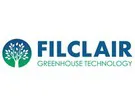
Filclair
Tel.: +31 623 141 992
Email: jelle.boeters@filclair.com
info@filclair.com
www.filclair.com
